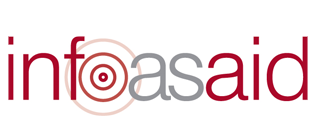Internews and the BBC World Service Trust are partners in a DfID funded consortium focusing on improving how aid agencies communicate with disaster affected communities. The emphasis is on the need to deliver information, as aid itself, through the most appropriate channels ...more
Improving communication in South Sudan
South Sudan
In a country that lives in the midst of a chronic crisis, engaging busy relief and development workers to consider the information needs of people affected by a possible future emergency can be challenging. This was the task for the team sent to Juba, South Sudan by the infoasaid project in preparation for the referendum and the expected increase of returnees from the North.
Since the end of the civil war in 2005 and the signing of the peace agreement 2.5 million people have returned to Southern Sudan without being fully integrated, putting enormous strain on an already fragile infrastructure. Since the referendum the number of returnees is increasing and there are fears of humanitarian crisis as resources are simply too scarce to meet demand. Should there be a resumption of hostilities, this disaster will be compounded as populations move en masse across the country and the basic infrastructure crumbles.
With existing programs in South Sudan, Internews and the BBC World Service Trust, infoasaid project consortium partners, already have good relationships with aid agencies. To build on these the project deployed, Project Board member, Lisa Robinson to discuss with aid agencies what support they needed in the run up to the referendum and with the potential humanitarian implications of a mass exodus of people.
Based on these discussions and the identified common needs, the project team developed training modules to build the capacity of the agencies. The course gives an overview of the issue and the core components of community communication. These include: understanding audience’s needs and preferred channels for communication, developing messaging, and setting up feedback mechanisms and other forms of two-way communication. The training blends practical simulation exercise with more traditional trainer-led content.
“The situation in Southern Sudan is an interesting opportunity because it gives us a lead time on a humanitarian crisis. There is an expected influx of returnees from the North and serious concerns about the ability to provide for them in the long-term. The project has been focusing on ensuring that when these people do return that agencies are able to effectively communicate with them as part of their response to their needs” said Jon Bugge, Head of Project.
So far the team have worked with PLAN International, Mines Advisory Group and Merlin, they also have training set up with Save the Children. Several other agencies have expressed interest including Medicins San Frontiers, World Vision, UNICEF and UNHCR.
“It has also been a good chance to see some of the tools that the project has developed being used in action” Bugge added.
One of the tools is the Sudan Media and Telecommunications Landscape Guide, which provides detailed information about how people access information via which channels. This tool compiles existing research and knowledge into a document that is aimed to help aid agencies identify the most appropriate channels and methods for communicating with their target communities.
Another tool being used for the first time is a Communication Practice Tracking Survey. This aims to discover the current nature, means and extent of communication between humanitarian agencies and crisis-affected populations across a range of emergency relief responses in 2011. This is being piloted in South Sudan and will most likely be rolled out to the wider humanitarian community throughout 2011.
The team deployed in mid-January to South Sudan and the activities will continue until late March on the ground.



